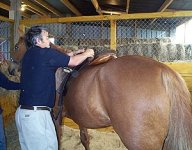You are using an out of date browser. It may not display this or other websites correctly.
You should upgrade or use an alternative browser.
You should upgrade or use an alternative browser.
انتخاب زین
- شروع کننده موضوع kamyab
- تاریخ شروع
♘امیرحسین♞
♘ مدیریت انجمن اسب ایران ♞
After your horse, your most important purchase probably will be your saddle. The choice of a saddle can make or break the riding experience you have with your horse. With a properly-fitting saddle, you and your horse will feel more comfortable when out riding, making the time together more enjoyable. A poorly fitting saddle, on the other hand, can cause your horse extreme discomfort and pain.
"A horse that is being ridden with a saddle that doesn't fit may show his discomfort by inappropriate behavior such as balking, rearing, head tossing, bucking, refusing transitions, head shaking, ear pinning, biting and/or kicking," says Sandy Arledge, a horse trainer and a breeder of American quarter horses in San Diego, CA.
Saddles don't come cheap – at least if you want one that will last for more than a few months. You probably will have to spend a minimum of about $250, or you could spend a couple thousand dollars or more for a top-of-the-line saddle.
Because it is a big-ticket item, you should make sure you've chosen the saddle that best suits you before you buy it rather than discover later that you should have bought another one.
If you've visited some tack shops or checked out a mail-order catalog or two, you may feel somewhat overwhelmed at the variety of saddles that are available.
Tips for Buying a Suitable Saddle
# Make sure you're comfortable with the riding discipline you choose before you invest in a saddle. Saddles vary, depending on whether you ride English or Western. If you choose English, you may want to go with dressage, hunt seat or saddle seat. Western riders would choose from roping, reining, stock or pleasure saddles.
# Research the brand names of the saddles made for your discipline. Contact the manufacturers and ask about the features of their products. Visit their Web sites. Consult with tack shop owners and get their perspective. Talk to other riders in your discipline to see which brands they prefer and why.
# Buy the best saddle you can afford. "Spending money on a quality saddle now pays off down the road," Arledge says. "If you spend two or three thousand dollars for a well-made saddle, it could easily last 20 years or more with proper care. If you figure out the cost over the life of the horse, it isn't that much per year compared with your total horse care expenses." A good quality saddle, she adds, will be more comfortable for both you and your horse, and will eliminate some behavior problems due to ill-fitting equipment.
# When shopping, sit in the saddle to make sure it fits your backside properly. Saddle seats come in a range of sizes, which for average-sized women usually is a 15- or 16-inch seat. Be prepared to sit in a lot of saddle seats before you find the one that suits you best.
# Choose a saddle that fits you and your horse. "A common mistake that people make is buying a saddle that just fits themselves or just fits their horse - but a saddle has to fit both," says Carol Timmerman, owner of Timmerman's Ranch and Saddle Shop in Island Lake, IL.
# Take the saddle home and try it out on your horse before making a final decision. Most tack shops give saddle shoppers at least 24 hours to make sure it fits and feels right.
# Carefully observe how the saddle sits on your horse. "A properly-fitting saddle will not press down on the withers, and no part of the saddle will touch the horse's spine directly," Timmerman says. After you're done riding and you take the saddle off, she says you will know the saddle does not fit your horse properly if he is sweaty or has dried spots on his withers.
# If you can't afford a new saddle, consider a used one. "Your money will be better spent on a high-quality used saddle than a poorly built, inexpensive new saddle," Arledge notes. "In addition, good, well built saddles do not loose their value, and usually can be resold with little or no devaluation."
Whether you purchase a new saddle or a used one – you can't go wrong with a quality saddle.
"A horse that is being ridden with a saddle that doesn't fit may show his discomfort by inappropriate behavior such as balking, rearing, head tossing, bucking, refusing transitions, head shaking, ear pinning, biting and/or kicking," says Sandy Arledge, a horse trainer and a breeder of American quarter horses in San Diego, CA.
Saddles don't come cheap – at least if you want one that will last for more than a few months. You probably will have to spend a minimum of about $250, or you could spend a couple thousand dollars or more for a top-of-the-line saddle.
Because it is a big-ticket item, you should make sure you've chosen the saddle that best suits you before you buy it rather than discover later that you should have bought another one.
If you've visited some tack shops or checked out a mail-order catalog or two, you may feel somewhat overwhelmed at the variety of saddles that are available.
Tips for Buying a Suitable Saddle
# Make sure you're comfortable with the riding discipline you choose before you invest in a saddle. Saddles vary, depending on whether you ride English or Western. If you choose English, you may want to go with dressage, hunt seat or saddle seat. Western riders would choose from roping, reining, stock or pleasure saddles.
# Research the brand names of the saddles made for your discipline. Contact the manufacturers and ask about the features of their products. Visit their Web sites. Consult with tack shop owners and get their perspective. Talk to other riders in your discipline to see which brands they prefer and why.
# Buy the best saddle you can afford. "Spending money on a quality saddle now pays off down the road," Arledge says. "If you spend two or three thousand dollars for a well-made saddle, it could easily last 20 years or more with proper care. If you figure out the cost over the life of the horse, it isn't that much per year compared with your total horse care expenses." A good quality saddle, she adds, will be more comfortable for both you and your horse, and will eliminate some behavior problems due to ill-fitting equipment.
# When shopping, sit in the saddle to make sure it fits your backside properly. Saddle seats come in a range of sizes, which for average-sized women usually is a 15- or 16-inch seat. Be prepared to sit in a lot of saddle seats before you find the one that suits you best.
# Choose a saddle that fits you and your horse. "A common mistake that people make is buying a saddle that just fits themselves or just fits their horse - but a saddle has to fit both," says Carol Timmerman, owner of Timmerman's Ranch and Saddle Shop in Island Lake, IL.
# Take the saddle home and try it out on your horse before making a final decision. Most tack shops give saddle shoppers at least 24 hours to make sure it fits and feels right.
# Carefully observe how the saddle sits on your horse. "A properly-fitting saddle will not press down on the withers, and no part of the saddle will touch the horse's spine directly," Timmerman says. After you're done riding and you take the saddle off, she says you will know the saddle does not fit your horse properly if he is sweaty or has dried spots on his withers.
# If you can't afford a new saddle, consider a used one. "Your money will be better spent on a high-quality used saddle than a poorly built, inexpensive new saddle," Arledge notes. "In addition, good, well built saddles do not loose their value, and usually can be resold with little or no devaluation."
Whether you purchase a new saddle or a used one – you can't go wrong with a quality saddle.
♘امیرحسین♞
♘ مدیریت انجمن اسب ایران ♞
How to Choose the Pefect Horse Saddle
There is nothing like the freedom and fun you can find in horseback riding. Whether you like to walk your horse leisurely through a nature trail, or gallop along for the thrill of it, the correct saddle is essential. Read on for pointers on how to get the best saddle for recreational riding
Saddle up and ride
1.
Step 1
Research the kind of saddle you want. There are many kinds of saddles. A few include dressage saddles, show, hunting, western and general saddles. The kind you choose depends on what kind of riding you do. Most people are more familiar with the western or general saddle for recreational riding.When visiting a saddle shop some questions you might want to ask include:How do I choose the right tree size?What size bar do I need?What material is the tree made out of?A good saddle shop can answer these questions and any other you might have.
2.
Step 2
Take the proper measurements to ensure the saddle fits. People new to riding often make the mistake of thinking just any saddle will do on any horse. Nothing could be further than the truth. The second misconception is that they will need to get a saddle that fits to their body type and specifications only. Actually the first fit has to be to your horse. A too large saddle will not be able to be secured properly on a small horse and the same can be said for having a horse too large for a smaller saddle.
3.
Step 3
Consider your financial options. Decide if you want to buy a new saddle or a used one. New saddles can be custom made for you and your horse's maximum comfort. A good used saddle can be a good choice though as long as properly fitted as well. If the rider is not finished growing, then a used saddle might be the best choice. One thing to keep in mind is that used saddle purchases are usually nonrefundable. It might be already broken in adding to comfort but if for any reason it does not work for you, then you might be stuck with it. The material used to make the saddle results in differing prices. All leather saddles are usually more expensive then one constructed from other materials.
4.
Step 4
Place a blanket or "pad" on the horse under the saddle. It should be about an inch thick. Place the saddle that you are considering using on this pad. Pull the cinch around your horse under the belly and tighten.Check all areas of the saddle after it is tightened. Make sure it is not pinching or too tight on any part of your horse. You should be able to slide three fingers under the saddle tree in front below the saddle horn and at the horse's withers. Also make sure the saddle is not too long and too far up on the front of the horse's body. Check to be sure the stirrups are hanging evenly and the saddle is level.
5.
Step 5
Ready to ride
Look up your personal saddle fit requirements. You are now satisfied that the saddle properly fits the horse. But does it fit you? Your horse might feel fine but without fitting your saddle to yourself, you might be in for an unpleasant ride! Some people try sitting in a few saddles at the tack shop before fitting the horse. Some prefer fitting the horse first. It is up to personal preference. A few key things to remember when fitting a saddle to your own needs are:Make sure the seat is the proper width and depth for "your" seat. You can do this easily at any saddle shop. They will have charts with different heights and weights. Find your height and weight on the chart and it will tell you the saddle measurements that will most likely work for you.Now you're ready to saddle up and ride!
Saddle up and ride
1.
Step 1
Research the kind of saddle you want. There are many kinds of saddles. A few include dressage saddles, show, hunting, western and general saddles. The kind you choose depends on what kind of riding you do. Most people are more familiar with the western or general saddle for recreational riding.When visiting a saddle shop some questions you might want to ask include:How do I choose the right tree size?What size bar do I need?What material is the tree made out of?A good saddle shop can answer these questions and any other you might have.
2.
Step 2
Take the proper measurements to ensure the saddle fits. People new to riding often make the mistake of thinking just any saddle will do on any horse. Nothing could be further than the truth. The second misconception is that they will need to get a saddle that fits to their body type and specifications only. Actually the first fit has to be to your horse. A too large saddle will not be able to be secured properly on a small horse and the same can be said for having a horse too large for a smaller saddle.
3.
Step 3
Consider your financial options. Decide if you want to buy a new saddle or a used one. New saddles can be custom made for you and your horse's maximum comfort. A good used saddle can be a good choice though as long as properly fitted as well. If the rider is not finished growing, then a used saddle might be the best choice. One thing to keep in mind is that used saddle purchases are usually nonrefundable. It might be already broken in adding to comfort but if for any reason it does not work for you, then you might be stuck with it. The material used to make the saddle results in differing prices. All leather saddles are usually more expensive then one constructed from other materials.
4.
Step 4
Place a blanket or "pad" on the horse under the saddle. It should be about an inch thick. Place the saddle that you are considering using on this pad. Pull the cinch around your horse under the belly and tighten.Check all areas of the saddle after it is tightened. Make sure it is not pinching or too tight on any part of your horse. You should be able to slide three fingers under the saddle tree in front below the saddle horn and at the horse's withers. Also make sure the saddle is not too long and too far up on the front of the horse's body. Check to be sure the stirrups are hanging evenly and the saddle is level.
5.
Step 5
Ready to ride
Look up your personal saddle fit requirements. You are now satisfied that the saddle properly fits the horse. But does it fit you? Your horse might feel fine but without fitting your saddle to yourself, you might be in for an unpleasant ride! Some people try sitting in a few saddles at the tack shop before fitting the horse. Some prefer fitting the horse first. It is up to personal preference. A few key things to remember when fitting a saddle to your own needs are:Make sure the seat is the proper width and depth for "your" seat. You can do this easily at any saddle shop. They will have charts with different heights and weights. Find your height and weight on the chart and it will tell you the saddle measurements that will most likely work for you.Now you're ready to saddle up and ride!
ناشناس
Active member
این روزها زین هایی که به بازار ایران میایند معمولا سایز 17 هست که همگی زینهای حرفه ای هستند مثل زین اشتوبن / پسووا/ پرستیژ/ خوب اگر ساز این زینها با کمر اسب جور نبود چیکار باید بکنیم؟
برای اینکه زین به کمر اسب اسیب نرسونه واینکه با کمر اسب جور بشه باید از ژل پد /نیم پد/ پد کامل /پد خزدار /استفاده کنیم بعد از اینکه عرق گیر را روی کمر اسب گذاشتیم /پد مورد نظر را میگذاریم بعد زین گذاری میکنیم در نظر داشته باشید تنگ هم در نگه داشتن زین تاثیر میگذارد / بعضی اسبها که کمر حساس تری دارند هم از ژل پد استفاده میکنند هم از پد خز دار
خوب زین های قدیمی تر مثل زین انگیلیسی و آلمان شرقی هم هست اینها هم معمولا سایزشون یکی میباشد /
زین های قدیمی تر دارای ماهیچه های بیشتری بودند که این باعث میشد تماس سوار با اسب کم بشه وبه خاطر وجود ماهیچه ها وزن زین هم بیشتر میشد
اما زین های جدید دیگر ماهیچه ای ندارند وطوری طراحی شدند که نشست سوار را روبه جلو هدایت میکنند وسواری با این زینها لذت بخش هم هست/
جدیدا هم یک سری زین مشکی طرح المان شرقی به بازار امده که ساخت کشور چین میباشد وتوسیه میشود در حد امکان از این زینها استفاده نشود
برای اینکه زین به کمر اسب اسیب نرسونه واینکه با کمر اسب جور بشه باید از ژل پد /نیم پد/ پد کامل /پد خزدار /استفاده کنیم بعد از اینکه عرق گیر را روی کمر اسب گذاشتیم /پد مورد نظر را میگذاریم بعد زین گذاری میکنیم در نظر داشته باشید تنگ هم در نگه داشتن زین تاثیر میگذارد / بعضی اسبها که کمر حساس تری دارند هم از ژل پد استفاده میکنند هم از پد خز دار
خوب زین های قدیمی تر مثل زین انگیلیسی و آلمان شرقی هم هست اینها هم معمولا سایزشون یکی میباشد /
زین های قدیمی تر دارای ماهیچه های بیشتری بودند که این باعث میشد تماس سوار با اسب کم بشه وبه خاطر وجود ماهیچه ها وزن زین هم بیشتر میشد
اما زین های جدید دیگر ماهیچه ای ندارند وطوری طراحی شدند که نشست سوار را روبه جلو هدایت میکنند وسواری با این زینها لذت بخش هم هست/
جدیدا هم یک سری زین مشکی طرح المان شرقی به بازار امده که ساخت کشور چین میباشد وتوسیه میشود در حد امکان از این زینها استفاده نشود
ناشناس
Active member
زینderby original
زین پرش البته برگ زین کمی بلند میباشد وبیشتر برای سواری آزاد استفاده میشود
زین دوم معمولا در سواری ازاد استفاده میشود اما به خاطر وجود ماهیچه های بزرگ زیر زین برای پرش توسیه نمیشود
زین سوم از این زین برای پرش استفاده میشود
زین چهارم هم که زین کابوی میباشد بیشتر برای گشت استفاده میشود
شکل اخر هم منحنی زین اسب میباشد
زین پرش البته برگ زین کمی بلند میباشد وبیشتر برای سواری آزاد استفاده میشود
زین دوم معمولا در سواری ازاد استفاده میشود اما به خاطر وجود ماهیچه های بزرگ زیر زین برای پرش توسیه نمیشود
زین سوم از این زین برای پرش استفاده میشود
زین چهارم هم که زین کابوی میباشد بیشتر برای گشت استفاده میشود
شکل اخر هم منحنی زین اسب میباشد
پیوست ها
-
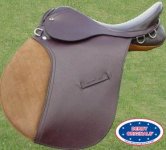 9421_1204779849.jpg15.7 کیلوبایت · بازدیدها: 91
9421_1204779849.jpg15.7 کیلوبایت · بازدیدها: 91 -
 arabian-horse-saddle.jpg81.7 کیلوبایت · بازدیدها: 6
arabian-horse-saddle.jpg81.7 کیلوبایت · بازدیدها: 6 -
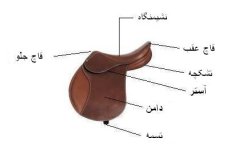 زین.jpg9.5 کیلوبایت · بازدیدها: 90
زین.jpg9.5 کیلوبایت · بازدیدها: 90 -
![186636_xoglmt_m[1]_3462_70193.jpg](/forum/data/attachments/10/10973-26c82b6e47f0d5c3aff52fc2b75f9d9b.jpg) 186636_xoglmt_m[1]_3462_70193.jpg13.5 کیلوبایت · بازدیدها: 91
186636_xoglmt_m[1]_3462_70193.jpg13.5 کیلوبایت · بازدیدها: 91 -
 hyperbolic_paraboloid_animation.gif2.1 کیلوبایت · بازدیدها: 115
hyperbolic_paraboloid_animation.gif2.1 کیلوبایت · بازدیدها: 115 -
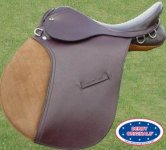 9421_1204779849.jpg15.7 کیلوبایت · بازدیدها: 91
9421_1204779849.jpg15.7 کیلوبایت · بازدیدها: 91 -
![186636_xoglmt_m[1]_3462_70193.jpg](/forum/data/attachments/10/10974-26c82b6e47f0d5c3aff52fc2b75f9d9b.jpg) 186636_xoglmt_m[1]_3462_70193.jpg13.5 کیلوبایت · بازدیدها: 87
186636_xoglmt_m[1]_3462_70193.jpg13.5 کیلوبایت · بازدیدها: 87 -
 زین.jpg9.5 کیلوبایت · بازدیدها: 86
زین.jpg9.5 کیلوبایت · بازدیدها: 86 -
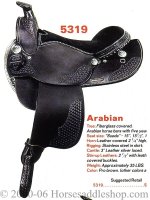 arabian-horse-saddle.jpg81.7 کیلوبایت · بازدیدها: 5
arabian-horse-saddle.jpg81.7 کیلوبایت · بازدیدها: 5 -
 hyperbolic_paraboloid_animation.gif2.1 کیلوبایت · بازدیدها: 115
hyperbolic_paraboloid_animation.gif2.1 کیلوبایت · بازدیدها: 115
ناشناس
Active member
نویسنده :deldar deldar
هیچ تا حالا فکر کردین چرا همه زین ها دارای یک شکل از قلتاق هستند و آن چیزی که تغییر می کند شکل ظاهری و اندازه زین است؟!
• اندازه زین برای هر اسب و سوار جداگانه انتخاب می شود و بیشتر راحتی اسب است که باید مد نظر قرار گیرد.چون اسب باید زین را به همراه وزن سوار به راحتی حمل کند.
• بهترین وضعیت قرارگیری زین این است که قاچ جلوی زین روی مهره پنچم بنشیند و قاچ عقب روی مهره هجدهم قرار گیرد که استخوانهای لکن سوارکار تقریبا روی دنده پانزدهم اسب قرار گیرد.
• در صورتی که زین عقب تر با جلوتر قرار گیرد اسب نمی تواند وزن زین و سوار را تحمل کند و اذیت می شود.
• هر اسب دارای آناتومی خاص خود است و این درست نیست که بگوییم چون این زین به این اسب می خورد پس برای دیگری که هم اندازه یا هم نژاد این اسب است هم مناسب است.
مثلا ملاحظه نمایید در این اسب چگونه زین بافاصله مناسب از سر تیز مهره ها قرار گرفته است.
و برعکس در مورد این اسب که سر تیز مهره ها بدون هیچ محافظ عضلانی یا چربی در کانال زین فرو رفته و فاطله کمی بین زین و پوست موجود است و سریعا به واسطه فشار وزن سوار جدوگاه اسب زخم می شود.
اما می توان برای صرفه جویی های اقتصادی با بکارگیری ابزاری کمکی مثل پدهای زیر زین نامناسب بودن بعضی از زین ها را جبران کرد.
گاهی هم قلتاق زین بر اثر کار مداوم فرسوده می شود و به اصطلاح جا باز می کند و یا می افتد که با یک بارگیری مجدد می توان آن را اصلاح کرد.
این زین همانطور هم که در شکل پیدا است احتیاج به بارگیری دارد تا کانال آن تنگتر شود.
باید دقت داشته باشید که قاچ جلو و عقب زین باید در یک راستا باشد.اگر قاچ عقب پایین تر باشد،قلتاق برای این اسب تنگ است و می توان برای اصلاح از یک نیم پد در پشت زین استفاده کرد و اگر قاچ جلو پایین باشد زین احتیاج به تعمیر یا تعویض دارد.
هیچ تا حالا فکر کردین چرا همه زین ها دارای یک شکل از قلتاق هستند و آن چیزی که تغییر می کند شکل ظاهری و اندازه زین است؟!
• اندازه زین برای هر اسب و سوار جداگانه انتخاب می شود و بیشتر راحتی اسب است که باید مد نظر قرار گیرد.چون اسب باید زین را به همراه وزن سوار به راحتی حمل کند.
• بهترین وضعیت قرارگیری زین این است که قاچ جلوی زین روی مهره پنچم بنشیند و قاچ عقب روی مهره هجدهم قرار گیرد که استخوانهای لکن سوارکار تقریبا روی دنده پانزدهم اسب قرار گیرد.
• در صورتی که زین عقب تر با جلوتر قرار گیرد اسب نمی تواند وزن زین و سوار را تحمل کند و اذیت می شود.
• هر اسب دارای آناتومی خاص خود است و این درست نیست که بگوییم چون این زین به این اسب می خورد پس برای دیگری که هم اندازه یا هم نژاد این اسب است هم مناسب است.
مثلا ملاحظه نمایید در این اسب چگونه زین بافاصله مناسب از سر تیز مهره ها قرار گرفته است.
و برعکس در مورد این اسب که سر تیز مهره ها بدون هیچ محافظ عضلانی یا چربی در کانال زین فرو رفته و فاطله کمی بین زین و پوست موجود است و سریعا به واسطه فشار وزن سوار جدوگاه اسب زخم می شود.
اما می توان برای صرفه جویی های اقتصادی با بکارگیری ابزاری کمکی مثل پدهای زیر زین نامناسب بودن بعضی از زین ها را جبران کرد.
گاهی هم قلتاق زین بر اثر کار مداوم فرسوده می شود و به اصطلاح جا باز می کند و یا می افتد که با یک بارگیری مجدد می توان آن را اصلاح کرد.
این زین همانطور هم که در شکل پیدا است احتیاج به بارگیری دارد تا کانال آن تنگتر شود.
باید دقت داشته باشید که قاچ جلو و عقب زین باید در یک راستا باشد.اگر قاچ عقب پایین تر باشد،قلتاق برای این اسب تنگ است و می توان برای اصلاح از یک نیم پد در پشت زین استفاده کرد و اگر قاچ جلو پایین باشد زین احتیاج به تعمیر یا تعویض دارد.
پیوست ها
-
 6keqwl4.jpg39.3 کیلوبایت · بازدیدها: 88
6keqwl4.jpg39.3 کیلوبایت · بازدیدها: 88 -
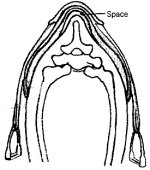 8brvqqw.jpg44.4 کیلوبایت · بازدیدها: 85
8brvqqw.jpg44.4 کیلوبایت · بازدیدها: 85 -
 6p7ewpv.gif45.4 کیلوبایت · بازدیدها: 84
6p7ewpv.gif45.4 کیلوبایت · بازدیدها: 84 -
 8a33dl0.gif69.1 کیلوبایت · بازدیدها: 79
8a33dl0.gif69.1 کیلوبایت · بازدیدها: 79 -
 8adnz2t.jpg35.4 کیلوبایت · بازدیدها: 76
8adnz2t.jpg35.4 کیلوبایت · بازدیدها: 76 -
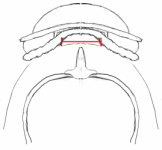 8am1thy.png8.5 کیلوبایت · بازدیدها: 84
8am1thy.png8.5 کیلوبایت · بازدیدها: 84 -
 6p7ewpv.gif45.4 کیلوبایت · بازدیدها: 84
6p7ewpv.gif45.4 کیلوبایت · بازدیدها: 84 -
 6keqwl4.jpg39.3 کیلوبایت · بازدیدها: 88
6keqwl4.jpg39.3 کیلوبایت · بازدیدها: 88 -
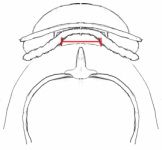 8am1thy.png8.5 کیلوبایت · بازدیدها: 83
8am1thy.png8.5 کیلوبایت · بازدیدها: 83 -
 8adnz2t.jpg35.4 کیلوبایت · بازدیدها: 77
8adnz2t.jpg35.4 کیلوبایت · بازدیدها: 77 -
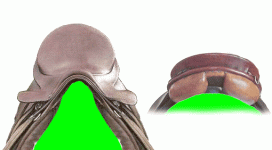 8a33dl0.gif69.1 کیلوبایت · بازدیدها: 79
8a33dl0.gif69.1 کیلوبایت · بازدیدها: 79 -
 8brvqqw.jpg44.4 کیلوبایت · بازدیدها: 83
8brvqqw.jpg44.4 کیلوبایت · بازدیدها: 83
ناشناس
Active member
سزار گفت:ایا در ایران هم انتخاب زین
برای اسبها با دقت انجام میشود؟
در ایران چند مدل زین برای عرضه به سوارکاران
موجود است؟؟ ??? ???
انتخاب زین برای اسب /خوب این بستگی به سوار کار داره واینکه چقدر حرفه ای میباشد وبه فکر اسبش هست/ مثلا داخل سوارکارهای ایل وعشایر از زین شیرازی (برنو)استفاده میکنن که این زینها بابای اسب رو میاره جلو چشمش
داخل ایران زین از مدهای مختلف که زیاده /تا 2سال پیش سوارکارهای حرفه ای وپرش کار از زین اشتوبن وپسووا استفاده میکردن که قیمت زینها حدود1میلیون و500هزار تومان بود از امسال هم که زین پرستیژ به بازار امده که حدود 4میلیون تومان قیمتش هست / زمانی که اسبهای حرفای و مطرح ایران قیمتشون از 50میلیون بالا میزنه بایدم زین خوب ولوازم به روز دنیا براشون تهیه کرد /
اسبهای ایرانی وتاروبرد با همون زین های المان شرقی و اشتوبن و پسووا طرح قدیم کنار میان
اسب دره شوری هم با همون زین شیرازی(برنو) کنار میان
ناشناس
Active member
Close Contact Saddle - English Craftsmanship at its best.
Available in three colours: Irish Tan, Brown and Dark Brown.
Sizes from 16.5 to 18 inch in three widths: Narrow, Medium and Wide.
زین Close Contact معمولا برای سواری آزاد وپرش مورد استفاده قرار میگیره
Available in three colours: Irish Tan, Brown and Dark Brown.
Sizes from 16.5 to 18 inch in three widths: Narrow, Medium and Wide.
زین Close Contact معمولا برای سواری آزاد وپرش مورد استفاده قرار میگیره
پیوست ها
-
 close-contact-english.jpg13.8 کیلوبایت · بازدیدها: 65
close-contact-english.jpg13.8 کیلوبایت · بازدیدها: 65 -
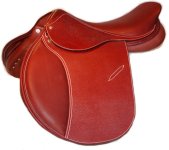 close_contact_saddle1x.jpg45.4 کیلوبایت · بازدیدها: 66
close_contact_saddle1x.jpg45.4 کیلوبایت · بازدیدها: 66 -
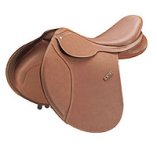 JumpingCloseContact.jpg8.1 کیلوبایت · بازدیدها: 63
JumpingCloseContact.jpg8.1 کیلوبایت · بازدیدها: 63 -
 Close-Contact-Saddle.jpg42.7 کیلوبایت · بازدیدها: 63
Close-Contact-Saddle.jpg42.7 کیلوبایت · بازدیدها: 63 -
 reflex.jpg22.4 کیلوبایت · بازدیدها: 5
reflex.jpg22.4 کیلوبایت · بازدیدها: 5 -
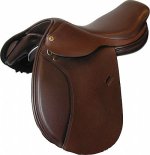 axcess-close-contact.jpg20.3 کیلوبایت · بازدیدها: 69
axcess-close-contact.jpg20.3 کیلوبایت · بازدیدها: 69 -
 JumpingCloseContact.jpg8.1 کیلوبایت · بازدیدها: 61
JumpingCloseContact.jpg8.1 کیلوبایت · بازدیدها: 61 -
 close-contact-english.jpg13.8 کیلوبایت · بازدیدها: 63
close-contact-english.jpg13.8 کیلوبایت · بازدیدها: 63 -
 close_contact_saddle1x.jpg45.4 کیلوبایت · بازدیدها: 63
close_contact_saddle1x.jpg45.4 کیلوبایت · بازدیدها: 63 -
 axcess-close-contact.jpg20.3 کیلوبایت · بازدیدها: 67
axcess-close-contact.jpg20.3 کیلوبایت · بازدیدها: 67 -
 Close-Contact-Saddle.jpg42.7 کیلوبایت · بازدیدها: 60
Close-Contact-Saddle.jpg42.7 کیلوبایت · بازدیدها: 60 -
 reflex.jpg22.4 کیلوبایت · بازدیدها: 0
reflex.jpg22.4 کیلوبایت · بازدیدها: 0
خیلی ممنون از اطلا عات مفید شما( ناشناس عزیز) درباره زین ، به درد من که خیلی خوردن این اطلاعا ت.
اما من حاضرم 10000 مورد از باشگاه های سوار کاری رو مثا ل بزنم که کوچکترین اهمیتی به این موارد نمی دن و باعث اسیب به اسب هاشون می شن ، با لاخره شما ایده ال های خوبی راجع به زین گفتین که بهتره همه بهش عمل کنن.
اما من حاضرم 10000 مورد از باشگاه های سوار کاری رو مثا ل بزنم که کوچکترین اهمیتی به این موارد نمی دن و باعث اسیب به اسب هاشون می شن ، با لاخره شما ایده ال های خوبی راجع به زین گفتین که بهتره همه بهش عمل کنن.
reihaneh
Member
The saddle is the all important link between the horse and the rider.
It must fit both and be suitable for the task and discipline you intend to use it for.
Clearly it would be unwise to use a light flat-racing saddle for mustering high country, or a dressage saddle for the Grand National steeplechase.
However, let's confine ourselves to basic saddle fitting, and particularly to the all purpose/general purpose saddle that most recreational riders already own.
There are six points that should be addressed to ensure the horse can carry the rider comfortably in a saddle.
NUMBER 1: Is there clearance along the spine or backbone of the horse? Check the channel of the saddle. Remember we are talking about clearance which means not touching.
Check it with the rider mounted. And as the padding compresses you may have to add some to maintain the clearance.
Horses change shape -- we all do. They put on weight and they take it off. They age, lose muscle and build muscle up.
So remember the first point: Keep checking the clearance along the spine.
NUMBER 2: Keep an even bearing; with the rider mounted there should be an even pressure over the horse's back.
It is the most difficult to check yet it is so very important.
On a straight-backed horse a saddle with a rounded panel will rock like a rocking horse. For the same reason, on a hollow-backed horse a saddle with a straight panel will touch in the front and rear only which will be pressure points.
The same problems confront us on the other axis. A saddle with a wide gullet on a narrow withered horse will have pressure points near the top of the shoulder.
And of course we have the opposite problem with a saddle with a narrow gullet and a horse with a wide wither.
Horses do change shape: they mature and they get old; they get fat and they get thin; they put muscle on and they lose muscle. All this can be quite a problem. But there are several techniques available to check the evenness of the bearing.
Girth up the saddle and allow the rider to mount.
Check with your fingers to feel the amount of pressure down from the withers and behind the flap to the rear of the panel.
Have the rider raise their leg and check under the flap.
It has its limitations but is often the only way you can check it.
By measurement -- take a piece of No. 8 wire and bend it so it fits the shape of the horse's wither where the front of the saddle will fit.
Draw the shape on a piece of cardboard and cut it out.
Check the cut-out fits the horse, and find a saddle to fit the other or have one altered to fit.
Another method is a little more complex so if you are not into maths forget it.
Looking at the problem from an engineering point of view we have two identifiable forms. The first is a curve, the curve of the horse's back over the saddle area parallel to the spine.
This can be classified as a radius curves with the same radius will nest into each other. (like spoons)
If we lay a straight stick of a known length along the horses back then in the centre of the stick measure down to the bottom of the curve we can calculate the radius of the curve.
Call the length of the stick L. (430mm)
The depth of the curve D. (35mm)
The formula is D squared plus L divided by two, squared divided by two times D.
(D² + (L/2)²)/2 x D (1225 + 46225) / 70 = 678mm radius
Use a calculator but you do need to understand the formula.
You can make a cardboard pattern of this shape also. It may well be that the radius is not the same each side so check them both.
NUMBER 3: The third point is common sense; match the saddle length to the horse and rider.
While understandably most people think in terms of 15, 16, and 17 inch saddles it is only a guide.
A short-coupled horse with too long a saddle may be damaged in the loins and kidneys. At the least you will get a very rough ride.
A short saddle on a long-backed horse means you are not distributing the weight over as large an area as is desirable.
Generally speaking the modern saddle will not give problems in this area, but watch out for some of the older ones.
NUMBER 4: The fourth point is quite obvious: check for an absence of lumps and solid objects in the padding.
Believe it or not pieces of brick have been found in saddle panels, and tacks can inadvertently fall into the flock during the padding process.
Constant use will cause salt-laden sweat to soak through into the padding, then when it evaporates it leaves salt encrustations behind.
These lumps of salt-encrusted padding can be quite large and very hard.
So check your panel for hard lumps and solid objects.
NUMBER 5: Addressing the fifth point can give us problems with the first; the rider should be in as a close contact as possible to the horse.
This means the padding, the tree and the seat must take up as little thickness as possible.
Italian cavalry officer Frederico Caprilli, about 100 years ago, came to believe (no doubt as the result of a fall) that it is better to keep the horse between you and the centre of the earth.
To do that you need to be well forward when travelling at speed and as close as possible to the horse.
However it is only 40-odd years since we have had a saddle to do this, developed by a Spaniard Count Ilias Toptani, which became the ancestor of the general purpose saddle.
So don't select a saddle that is as thick as two short bricks, you will be perched up on the horse like a pimple on a pumpkin.
NUMBER 6: The last of our six points is the one we humans can relate to best of all.
The horse's back must be saddle fit.
Have you ever worn a new pair of shoes or other footwear to town for the day?
Ever been for a tramp in borrowed boots? Or carried a pack for a few days?
All of these can cause blisters, chafing and considerable discomfort unless we allow time for our skin to desensitize, thicken, and become fit.
If you take your horse trekking or trail riding without any build up your leg muscles and the inside of your thighs can become very uncomfortable and chafed.
So be aware that your horse's back needs time to become saddle fit, otherwise even with careful attention to the other five points you will have an uncomfortable horse after you have been riding for any length of time.
So remember:
Clearance over the spine
Even bearing
Match the length
No lumps or solid bits
As close as possible
A fit back
Have your saddle checked from time to time -- most saddlers will do it for free.
Saddlery is an old trade and while most saddles are now made in factories with very little hand work, saddle repairs and maintenance is carried out in small saddlery shops and is very labour intensive so can cost more than you expect.
Look after your saddle. Select one to suit you, your horse, and the type of riding you intend to do, and enjoy that very special experience of horse riding
It must fit both and be suitable for the task and discipline you intend to use it for.
Clearly it would be unwise to use a light flat-racing saddle for mustering high country, or a dressage saddle for the Grand National steeplechase.
However, let's confine ourselves to basic saddle fitting, and particularly to the all purpose/general purpose saddle that most recreational riders already own.
There are six points that should be addressed to ensure the horse can carry the rider comfortably in a saddle.
NUMBER 1: Is there clearance along the spine or backbone of the horse? Check the channel of the saddle. Remember we are talking about clearance which means not touching.
Check it with the rider mounted. And as the padding compresses you may have to add some to maintain the clearance.
Horses change shape -- we all do. They put on weight and they take it off. They age, lose muscle and build muscle up.
So remember the first point: Keep checking the clearance along the spine.
NUMBER 2: Keep an even bearing; with the rider mounted there should be an even pressure over the horse's back.
It is the most difficult to check yet it is so very important.
On a straight-backed horse a saddle with a rounded panel will rock like a rocking horse. For the same reason, on a hollow-backed horse a saddle with a straight panel will touch in the front and rear only which will be pressure points.
The same problems confront us on the other axis. A saddle with a wide gullet on a narrow withered horse will have pressure points near the top of the shoulder.
And of course we have the opposite problem with a saddle with a narrow gullet and a horse with a wide wither.
Horses do change shape: they mature and they get old; they get fat and they get thin; they put muscle on and they lose muscle. All this can be quite a problem. But there are several techniques available to check the evenness of the bearing.
Girth up the saddle and allow the rider to mount.
Check with your fingers to feel the amount of pressure down from the withers and behind the flap to the rear of the panel.
Have the rider raise their leg and check under the flap.
It has its limitations but is often the only way you can check it.
By measurement -- take a piece of No. 8 wire and bend it so it fits the shape of the horse's wither where the front of the saddle will fit.
Draw the shape on a piece of cardboard and cut it out.
Check the cut-out fits the horse, and find a saddle to fit the other or have one altered to fit.
Another method is a little more complex so if you are not into maths forget it.
Looking at the problem from an engineering point of view we have two identifiable forms. The first is a curve, the curve of the horse's back over the saddle area parallel to the spine.
This can be classified as a radius curves with the same radius will nest into each other. (like spoons)
If we lay a straight stick of a known length along the horses back then in the centre of the stick measure down to the bottom of the curve we can calculate the radius of the curve.
Call the length of the stick L. (430mm)
The depth of the curve D. (35mm)
The formula is D squared plus L divided by two, squared divided by two times D.
(D² + (L/2)²)/2 x D (1225 + 46225) / 70 = 678mm radius
Use a calculator but you do need to understand the formula.
You can make a cardboard pattern of this shape also. It may well be that the radius is not the same each side so check them both.
NUMBER 3: The third point is common sense; match the saddle length to the horse and rider.
While understandably most people think in terms of 15, 16, and 17 inch saddles it is only a guide.
A short-coupled horse with too long a saddle may be damaged in the loins and kidneys. At the least you will get a very rough ride.
A short saddle on a long-backed horse means you are not distributing the weight over as large an area as is desirable.
Generally speaking the modern saddle will not give problems in this area, but watch out for some of the older ones.
NUMBER 4: The fourth point is quite obvious: check for an absence of lumps and solid objects in the padding.
Believe it or not pieces of brick have been found in saddle panels, and tacks can inadvertently fall into the flock during the padding process.
Constant use will cause salt-laden sweat to soak through into the padding, then when it evaporates it leaves salt encrustations behind.
These lumps of salt-encrusted padding can be quite large and very hard.
So check your panel for hard lumps and solid objects.
NUMBER 5: Addressing the fifth point can give us problems with the first; the rider should be in as a close contact as possible to the horse.
This means the padding, the tree and the seat must take up as little thickness as possible.
Italian cavalry officer Frederico Caprilli, about 100 years ago, came to believe (no doubt as the result of a fall) that it is better to keep the horse between you and the centre of the earth.
To do that you need to be well forward when travelling at speed and as close as possible to the horse.
However it is only 40-odd years since we have had a saddle to do this, developed by a Spaniard Count Ilias Toptani, which became the ancestor of the general purpose saddle.
So don't select a saddle that is as thick as two short bricks, you will be perched up on the horse like a pimple on a pumpkin.
NUMBER 6: The last of our six points is the one we humans can relate to best of all.
The horse's back must be saddle fit.
Have you ever worn a new pair of shoes or other footwear to town for the day?
Ever been for a tramp in borrowed boots? Or carried a pack for a few days?
All of these can cause blisters, chafing and considerable discomfort unless we allow time for our skin to desensitize, thicken, and become fit.
If you take your horse trekking or trail riding without any build up your leg muscles and the inside of your thighs can become very uncomfortable and chafed.
So be aware that your horse's back needs time to become saddle fit, otherwise even with careful attention to the other five points you will have an uncomfortable horse after you have been riding for any length of time.
So remember:
Clearance over the spine
Even bearing
Match the length
No lumps or solid bits
As close as possible
A fit back
Have your saddle checked from time to time -- most saddlers will do it for free.
Saddlery is an old trade and while most saddles are now made in factories with very little hand work, saddle repairs and maintenance is carried out in small saddlery shops and is very labour intensive so can cost more than you expect.
Look after your saddle. Select one to suit you, your horse, and the type of riding you intend to do, and enjoy that very special experience of horse riding
خلاصه ترجمه:
زین عامل ضروری پیوند بین اسب و سوار است که باید برای هر دو تنظیم بوده و نیز متناسب با کار و رشته ی مورد نظر شما باشد .
میخواهیم به مقدمات تنظیم زین اکتفا کنیم به خصوص زین های چند منظوره و عمومی که اکثر سوارکاران از آن استفاده میکنند.
شش نکته برای تضمین این که اسب سوار را به راحتی حمل کند باید در نظر گرفته شود.
نکته اول:
آیا فاصله (فضای خالی) روی ستون فقرات اسب وجود دارد،این فضا را چک کرده به یاد داشته باشید که ما از یک فضای باز و خالی صحبت میکنیم یعنی تماسی وجود ندارد.این مسئله را در حالی چک کنید که سوار روی اسب است ،در صورتی که پد ها فشرده شده بودند ممکن است برای ایجاد این فضای خالی پد اضافه کنید.
توجه کنید که اندام اسب همانند همه ما تغییر میکند آنها چاق یا لاغر میشوند و یا عضلاتشان ضعیف یا قوی میشود بنابراین همواره از وجود این فضای خالی اطمینان حاصل کنید.
نکته دوم:
باری که بر پشت اسب قرار میگیرد باید به طور همسان پخش شده باشد .در حالی که سوار روی اسب قراردارد باید فشار برابری بر نقاط مختلف پشت اسب وارد شود.
آزمون درستی این مسئله بسیار سخت و در عین حال بسیار مهم است.
روی اسبی با پشت صاف یک قاب منحنی همانند یک گهواره چوبی نوسان خواهد کرد و به همین ترتیب روی اسبی با پشت منحنی زینی با قابی مسطح فشار را تنها در نقاط جلو و عقب زین وارد می آورد.
مشکل مشابهی در سایر محور ها نیز وجود دارد و زینی با مجرای پهن روی یک اسب لاغر نقاط نزدیک بالای شانه را تحت فشاری مضاعف قرار خواهد داد.
باز لازم به ذکر است که اندام اسب با افزایش سن و کاهش و افزایش وزن در حال تغییر میباشد و تمام این مسائل میتواند مشکل ساز باشد ولی تکنیک هایی برای بررسی پخش همسان بار وجود دارد.
- تنگ زین را ببندید و از فرد بخواهید سوار شود.با انگشتان خود میزان فشار بر نقاط مختلف را از جدوگاه و پشت برگه تا آخرین نقطه انتهای قاب حس کرده از توزیع همسان بار مطمئن شوید. از سوار بخواهید پاهای خود را بالا ببرد و به این ترتیب نقاط زیر برگه زین را نیز مورد بررسی قرار دهید.
گرچه این کار محدودیت های خود را دارد ولی اغلب تنها راهی است که شما را قادر به چک کردن فشار وارد در نقاط مختلف میسازد.
- روش اندازه گیری: قطعه ای سیم شماره 8 بر دارید و آن را به شکلی خم کنید که دقیقا هم اندازه با جدوگاه اسب و جایی باشد که جلو ترین نقطه زین در آن محل قرار میگیرد .
شکل به وجود آمده را روی یک مقوا ترسیم کرده آن را ببرید و مجددا آن را با پشت اسب چک کنید سپس زینی را انتخاب کنید که با مقوای شما تنظیم باشد و یا زینی را تغییر دهید تا به آن حالت برسد.
- روش دیگر کمی پیچیده است و بنابراین اگر با ریاضیات آشنا نیستید فراموش کنید . اگر از دید مهندسی نگاه کنیم دو فرم قابل شناسایی وجود دارد .اولین فرم منحنی است،منحنی پشت اسب در منطقه ای که زین روی آن قرار میگیرد با ستون فقرات اسب موازیست این میتواند در دسته منحنی های شعاعی قرار گیرد ((radius curves with the same radius will nest into each other. (like spoons) اگر چوبی با طول معین را روی پشت اسب قرار دهیم و فاصله وسط چوب تا پایین ترین نقطه منحنی را به دست آوریم با داشتن طول چوب (L) و این فاصله (D) شعاع منحنی در فرمول زیر به دست خواهد آمد
D² + (L/2)²)/2 x D
میتوان از این الگو یک برش مقوا تهیه کرد البته از آنجایی که ممکن است شعاع در دو طرف یکسان نباشد بنابراین هر دو را چک کنید.
نکته سه:
این نکته بر اساس آنچه متعارف است در نظر گرفته میشود به این صورت که باید طول زین با اسب و سوار تنظیم باشد
در حالی که اکثریت به طول ای 15-16-17 اینچ فکر میکنند این تنها یک راهنمایی است.
روی یک اسب کوتاه با یک زین بلند کمر آسیب میبیند و شما نیز سواری سختی خواهید داشت و زین کوتاه روی اسبی بلند یعنی شما وزن خود را در منطقه ای کمتر از آنچه باید توزیع میکنید.
زین های مدرن امروزی معمولا در این زمینه مشکلی ندارند ولی در مورد زین های قدیمی تر محتاط باشید.
نکته 4:
این نکته بسیار واضح است ،باید پد را بررسی کنید که سنگ یاجسم جامد دیگری در آن وجود نداشته باشد.
باور کنید یا نه تکه های سنگ در قاب زین یافت شده و میخ یا پنس ممکن است همواره در فرآیند پد گذاری در آن افتاده باشد. استفاده دائم نیز ممکن است موجب شود عرق که حاوی نمک است به درون پد نفوذ کند و با تبخیر آب نمک باقی بماند این تکه های نمک در پد میتواند بسیار درشت و سخت باشد بنابراین پد خود را بررسی کنید تا جسم جامدی در آن نباشد.
نکته 5:
آشنایی با این نکته ممکن است ما را به نکته اول دچار مشکل کند،سوارباید در تماس کامل و تا حد امکان هر چه بیشتر با اسب باشد.
این یعنی پد ها قالب و محل نشست باید تا جای ممکن نازک باشد.
Frederico Caprilli افسر سواره نظام ایتالیا در حدود 100 سال پیش معتقد بود بهتر است اسب را بین خود و مرکز زمین قرار دهید(تطابق مرکز ثقل) برای این کار بایددر سرعت تا حد امکان به جلو و نزدیک و چسبیده به اسب باشید به هر صورت حدود 40 سال از زمان اختراع زینی به این منظور توسط کنت اسپانیولی به نام Ilias Toptani میگذرد و آن در واقع جد همین زین های چند منظوره امروزی است .
بنابر این از زین هایی با ضخامت زیاد استفاده نکنید
نکته 6:
آخرین نکته این که زین باید روی پشت اسب فیت باشد.
آیا تا به حال یک جفت کفش جدید یا هر نوع پوشش دیگری برای یک روز تفریح در شهر پوشیده اید؟
آیا گاهی با کفش قرضی پیاده روی کرده اید؟ یا یک کوله پشتی را برای چند روز حمل کرده اید؟ تمام این ها میتواند زخم و ناراحتی محسوسی ایجاد کند مگر اینکه به پوست خود زمان دهیم که بی حس ، ضخیم و متناسب شود.
اگر پیش از آماده سازی عضلات پا و داخل ران برای گشت بروید بسیار ناراحت خواهید بود و حتی پوست نیز ممکن است دچار ساییدگی شود.بنابر این آگاه باشید که پشت اسب نیز برای فیت شدن با زین به زمان نیاز دارد در غیر این صورت حتی با وجود رعایت سایر 5 مورد نیز شما پس از مدتی سواری راحتی نخواهید داشت.
بنابر این به یاد داشته باشید .
1. فضای خالی روی تیره پشت
2. توزیع همسان بار بر پشت اسب
3. تنظیم بودن طول زین
4. نبود اجسام جامد و اضافی
5. تماس هر چه بیشتر
6. یک پشت مناسب
زین خود را بار ها و بار ها چک کنید . بسیاری از سوارکارن این کار را برای تفریح انجام میدهند.
زین داری یک تجارت کهن است در حالی بیشتر زین ها امروزه در کارخانه ها با حداقل دخالت کار دست ساخته میشود تعمیر و نگهداری آن ها در مغازه ای کوچک و با زحمت بسیار انجام میگیرد از این رو ممکن است مجبور شوید بیش از انتظارتان خرج کنید.
به زین خود توجه کنید و زینی را انتخاب کنید که مناسب شما و اسبتان باشد و نیز مناسب رشته ای که در آن سواری میکنید و از تجربه خاص سواری لذت ببرید.
پیوست ها
kamyab
Member
A close contact saddle is primarily used for jumping and allows the rider to have maximum feel of the animal. The design includes a flat seat with forward short flaps and no extra knee roll, which allows the rider to be forward and ready for the two-point jumping position. This saddle, which provides little seat and leg support, is for a more experienced riderkamyab گفت:ميشه در مورد زينهاي close contact توضيح بدين؟
زینهای close contact برای پرش مناسب هست و سوارکار حرفه ای میخاد،نشیمنگاه صاف با برگه های زین کوچک، در حقیقت این زینها کوچیک هستند و تماس سوار با اسب زیاد هست،البته اگه درست فهمیده باشم
kamyab
Member
APADANA راست میگه،منم خیلی از اسبارو دیدم که آسیب دیدن متاسفانهvahid_vosugh گفت:اقا اگه لطف کنید 100 مورد را نام ببرید ممنون می شم.
بقیه فعلا پیش کش.
vahid_vosugh گفت:اقا اگه لطف کنید 100 مورد را نام ببرید ممنون می شم.
بقیه فعلا پیش کش.
اخه عزیزان من شما ها تا حالا همش باشگاه درست و حسابی دیدین و بعضی از باشگا ه ها رو ندیدین که برای اسب های بیچاره مثل جهنم میمو نن. من حتی گاو داریو دید م که طرف به باشگاه اسب سواری تبدیل کرده در حالی که طرف هیچی از اسب نمی دونسته.سنا گفت:اما من هر باشگاهي ديدم اين مساله رعايت شده


